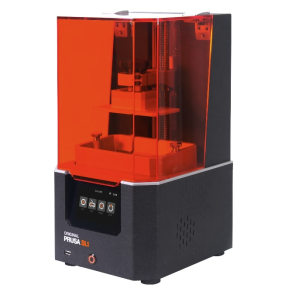Are you looking for a printer that can help you save machine and material cost, spend less time, and obtain high-quality products without errors or blemishes? Look no further, as resin 3D printers are here to solve all your needs…
Resin 3D technology is globally known for its ability to produce high-quality products with well-defined edges, all thanks to the Vat Polymerization Technology (VPT). This technology uses the photopolymerization process, which entails exposing polymer (in liquid form) to ultraviolet light to turn them to solids. Note that these machines do not use filament or powder. They use resin.
There are three types of the Vat Polymerization Technology (VPT): The Stereolithography method, Light Crystal Display (LCD) printing, and the Digital Light Processing (DLP). The main difference between them is the light source used to treat the resin.
Stereolithography is commonly used, and is sometimes referred to as the ‘mother of all digital printing technologies’. The process starts with the roller of the printer spreading out a thin layer of polymer in liquid form. Because of this form, the thickness across the entire platform will be uniform and consistent.
The liquid polymer is often sensitive to UV. When it comes in contact with a computer-controlled UV laser, the resin transforms from liquid to solid. The laser then marks the outline of the print that it came in contact with onto the resin layer and hardens that part only. The other parts not touched by the laser will remain liquid.

These procedures are repeated over and over again, with the printer roller spreading out a new thin layer every time. The laser continuously solidifies specific areas of the layer that eventually make up different parts of the print. Since it is in the liquid form, support materials need to be added to prevent parts from sticking out. Once the desired object is gotten, the print is removed from the resin tank. The excess liquid is either allowed to flow away or be stored and reused for another printing operation. The remaining thing to complete is the finishing touch on the print, which includes smoothing the surfaces and edges, removing support systems/structures, paint the object, etc.
Now you may be wondering, what are the resins available for use? Is every resin good for every kind of production?
Different types of resins exist. We have transparent resin, mammoth resin, standard resin, and grey resin.
- Mammoth resin: This resin is one of the most powerful resins, and is often used on big industrial 3D printers. It can print up to a size of 2100x700x800mm and can be spray painted based on personal choice.
- Transparent resin: As the name implies, this resin is actually transparent. It can also be ordered with several colors, prints up to the size of the mammoth resin and be spray painted based on personal choice as well.
- Gray Resin: This resin often produces very grey, smooth and detailed products. It is often used to create small and mid-sized products.
- Standard resin: This beautiful thing about this resin is that it is highly affordable. Plus, you can even order this with supporting structures, so you do not have to spend so much time on finishing touches.
Digital Light Processing entails exposing liquid polymer to light emanating from a DLP projector (under safe conditions).


